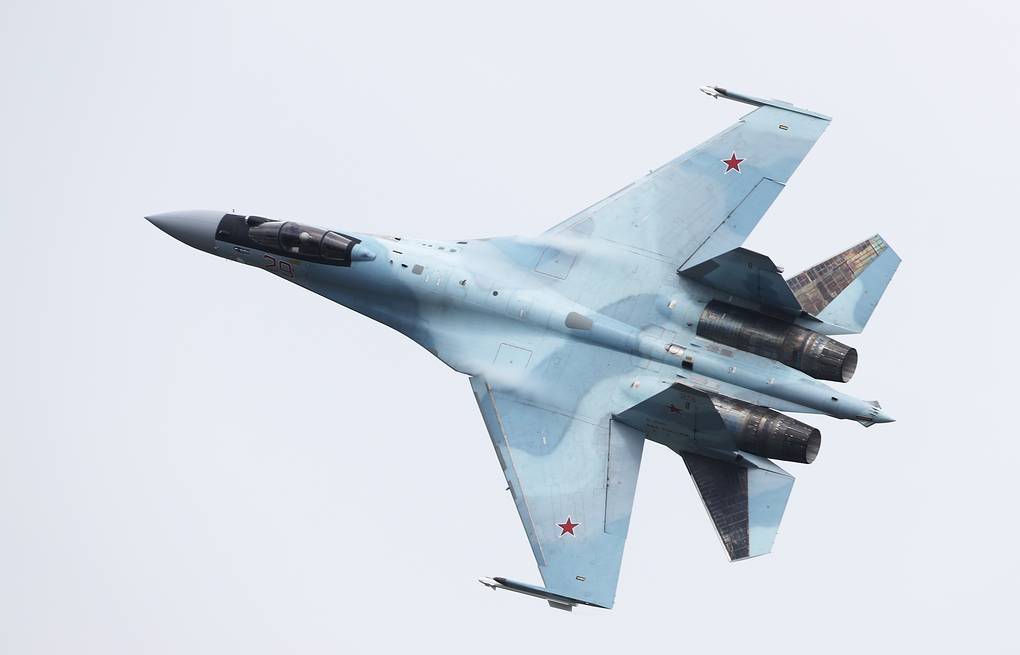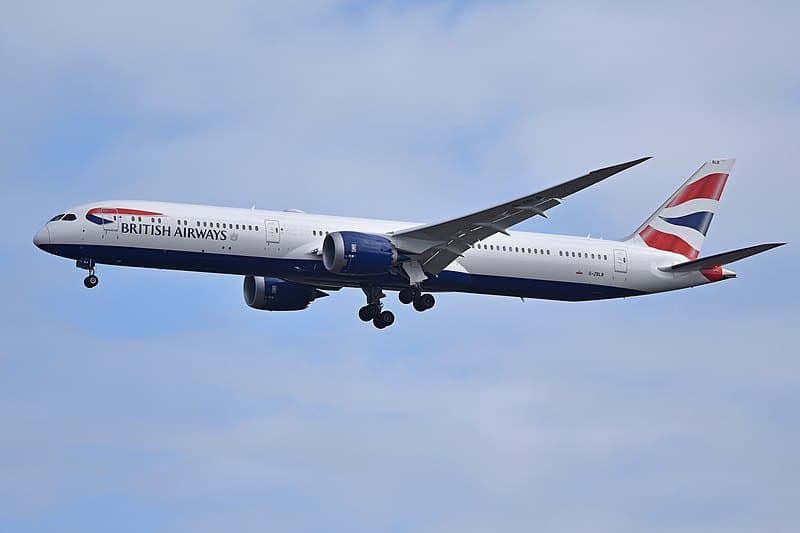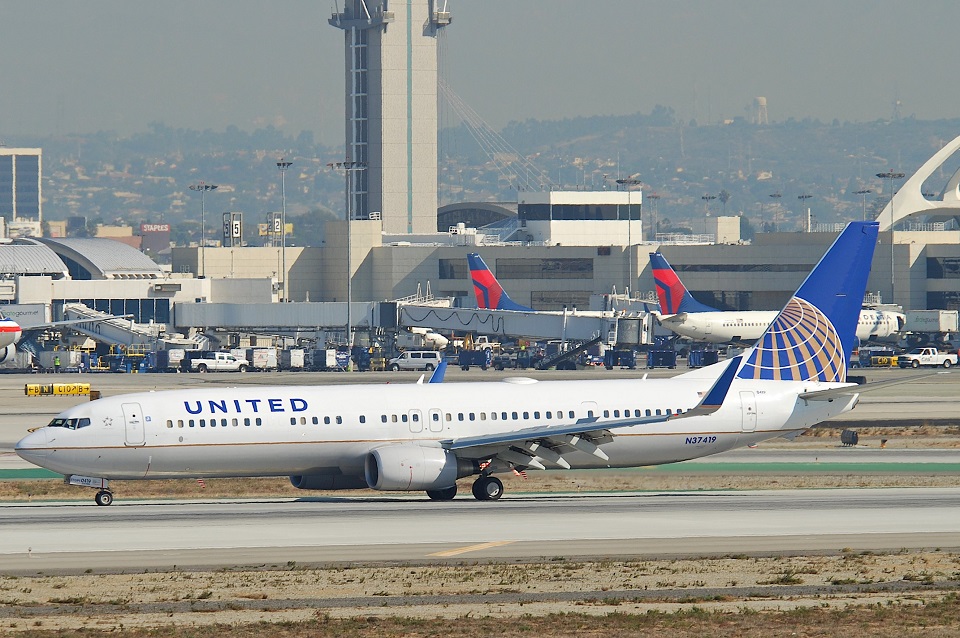Aviation
The Russia’s 5 Most Dangerous Fighter Planes ever built.

As the Russian-Ukraine conflict continues, fighter jets are playing an increasingly important role in attacking the country. But the Russians have modern aero planes that can tear through any conflict. Let’s take a look at five of the most dangerous warplanes ever produced and their capabilities.
No 5, The Sukhoi Su 27.
It is a twin-engine supermaneuverable fighter aircraft with Soviet origins. It has a range of 3,530 kilometer’s, a fuel capacity of 9,400 kg, a top speed of 2,500 kilometers, heavy aircraft ordnance, modern avionics, and exceptional maneuverability. The Su-27 was developed for air superiority duties, although later variants can undertake nearly all aerial combat roles. It was created as a companion to the Mikoyan MiG-29.
No 4, The Mig 35
It is a Russian multirole fighter designed by Mikoyan, a United Aircraft Corporation division. It is a development of the MiG-29 and is marketed as a 4++ generation jet fighter. It has a top speed of 2,100 kilometres per hour and a combat range of 2100 kilometres. The klimov RD 33Mk has a maximum takeoff weight of roughly 24500 kg. With afterburner, it produces 88.2 kN.
It can climb 65,000 feet per minute and can carry a variety of bombs, as well as Air to Air and Surface missiles, as well as Anti-radiation and Anti-Ship Missiles.
Turkey is Interested to build 2nd Antonov An225 Mriya commercial jet
No 3, The Su-35.
It’s the name given to two upgraded versions of the Su-27 air-defense fighter. Sukhoi Design Bureau created them and the Komsomolsk-on-Amur Aircraft Plant produced them. They are single-seat, twin-engine, supermaneuverable aircraft.
It has a top speed of 2400 km/h, a range of 3600 km, and a maximum altitude of 59000 feet.
It has a fuel capacity of 11,500 kg and a combat range of 1600 km. It can carry various weapons like S25, Air to air and the Surface and Anti-ship missiles and anti-radiations missiles. It can carry the TV guided and laser Guided bombs.
‘Spirit of Innovation’ stakes claim to be the world’s fastest all-electric vehicle
No 2, Tu-160.
It is a supersonic, variable-sweep wing heavy strategic bomber designed by the Tupolev Design Bureau in the Soviet Union in the 1970s. It is the largest and heaviest Mach 2+ supersonic military aircraft ever built.
The 4 samara NK 321 afterburning engine powers this aircraft, which can take off up to 157,000 kg. It has a top speed of 2,220 km/h and a range of 12,300 km. It has a service ceiling of 52,000 feet and a rate of climb of 14,000 feet per minute.
It has two internal rotary launchers, each containing six Raduga Kh 55SM cruise missiles and twelve short-range nuclear missiles, and two internal bays for 45,000 kg of munitions.
5 interesting facts about Boeing 787 Dreamliner .
No 1, The Su 57.
Sukhoi has designed a single-seat, twin-engine stealth multirole fighter. The design combines stealth, supermaneuvrability, super cruise, integrated avionics, and considerable internal payload capacity, making it a multirole fighter capable of aerial warfare as well as ground and sea strike.
At Mach 1.5, the maximum speed is 2,135 km/h, with a range of 3500 km and a service ceiling of 66,000 feet. It has a 70 meter per seconds rate of ascent and It can carry a variety of missiles, including the r77 m and r74 m2 air-to-air missiles. Air-to-surface missiles weighing 4 kg and measuring 38 meters, as well as anti-ship and anti-radiation missiles. it can also carry 500 kg cluster bomb + active homing anti-tank drill
Airbus to add A321 production capabilities in Toulouse

Aviation
Air India’s B747 Makes Its Final Journey, Waving Farewell to Fans

In a poignant moment marking the end of an era in aviation history, Air India’s iconic Boeing 747 aircraft, affectionately known as the ‘Queen of the Skies,’ embarked on its ultimate journey from Mumbai’s international airport.
The departure, bound for Plainfield, USA, where it will undergo dismantling and part-stripping under the ownership of American AerSale, signals the closure of a storied chapter for the airline.
Once revered for transporting dignitaries ranging from prime ministers to presidents, the Boeing 747 has etched itself into aviation lore. Yet, as airlines worldwide pivot towards more contemporary and cost-effective aircraft, Air India’s decision to bid farewell to its remaining Boeing 747s reflects the pragmatic realities of today’s aviation landscape.
The sale of these majestic planes to AerSale represents a strategic move by Tata Group, Air India’s new custodian, towards optimizing operational efficiency and embracing modern industry standards. Out of the four aircraft sold, two will be repurposed into freighters, while the remaining pair will be meticulously disassembled to salvage valuable components.
The final flight from Mumbai witnessed a touching tribute as pilots performed a traditional ‘Wing Wave,’ symbolizing the conclusion of the Boeing 747‘s distinguished service with Air India. This poignant gesture encapsulates the deep sentiment attached to the aircraft’s departure and its significant contribution to the airline’s legacy.
As the Boeing 747 embarks on its journey to Plainfield, USA, nostalgia permeates the air, evoking memories of its maiden flight on March 22, 1971. Over five decades, Air India operated a total of 25 Boeing 747s, each leaving an indelible mark on the annals of aviation history.
Middle East
British Airways Resumes Daily Flights to Abu Dhabi, After 4-Year hiatus

British Airways made its way back to Abu Dhabi, landing at Zayed International Airport. Following a four-year break in service, both crew and passengers were greeted with enthusiasm.
In the summer of 2024, British Airways plans to launch a daily route, utilising a Boeing 787-9, from London Heathrow to Abu Dhabi. The new route enhances ties between the UAE and the UK and expands vast worldwide network, catering to passengers who may be visiting friends and family or travelling for business.
Arriving in Abu Dhabi at 08.30+1, flight BA073 to Abu Dhabi leaves London Heathrow at 22.25. Departing at 10.10 and landing at London Heathrow at 15.20 is the inbound flight (BA072).
The chief executive officer and managing director of Abu Dhabi Airports, Elena Sorlini, stated: “We are delighted to welcome British Airways to Zayed International Airport. Their daily schedule is expected to improve connectivity and stimulate travel and business.” Visitors may experience the dynamic capital of the United Arab Emirates like never before at our brand-new, award-winning, state-of-the-art terminal, where they will be welcomed with the best kind of Emirati hospitality.”
Flight schedule:
| London Heathrow (LHR) to Zayed International (AUH)All times are local | ||||||
| Season | Flight number | Departing LHR | Arriving AUH | Flight number | Departing AUH | Arriving LHR |
| Summer ‘24 | BA73 | 22:25 | 08:30+1 | BA72 | 10:10 | 15:20 |
| Winter ‘24 | BA73 | 22:25 | 09:30+1 | BA72 | 11:10 | 15:20 |
Aviation
FAA investigation: Passenger seated in Captain’s seat inside cockpit at cruising altitude

A viral video capturing a startling moment aboard a United Airlines charter flight from Denver to Toronto has triggered a federal investigation.
The footage, initially shared on social media by Hensley Meulens, the hitting coach for the Colorado Rockies baseball team, depicts a member of the coaching staff seated in one of the pilot seats while the aircraft was in mid-flight.
In his caption, Meulens expressed gratitude to the captain and first officer for allowing him this unusual experience. The video, filmed by another passenger, reveals the cockpit door open, and at one point, a third passenger briefly enters the flight deck. Alarmingly, during this time, the captain was absent from the cockpit.
Despite the flight being a private charter operated by United Airlines, company and Federal Aviation Administration (FAA) regulations strictly prohibit passengers from entering the cockpit during flight or leaving the flight deck unsecured.
United Airlines swiftly responded, expressing deep concern over the incident. A spokesperson emphasized that the video depicted an unauthorized person in the flight deck at cruising altitude with the autopilot engaged, constituting a clear violation of safety and operational policies.
The FAA confirmed that it is actively investigating the incident, highlighting that unauthorized access to the flight deck during flight is a violation of federal regulations. The agency assured that it is taking the matter seriously and will conduct a thorough examination to ensure compliance with aviation safety standards.
























